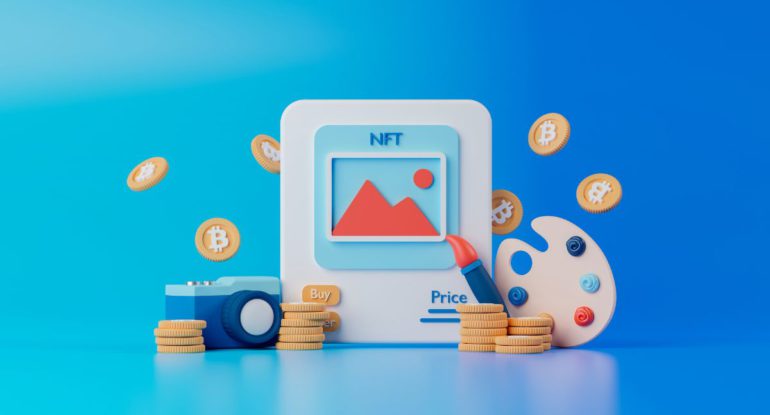Why Everyone Needs to Investing in NFTs in the Coming Years

In recent years, the world of digital assets has seen a remarkable transformation with the rise of Non-Fungible Tokens (NFTs). These unique digital assets, backed by blockchain technology, have captured the attention of artists, collectors, investors, and enthusiasts alike. But why should everyone consider investing in NFTs in the coming years? Let’s delve into the fascinating world of NFTs and explore their growing significance.
Explanation of NFTs (Non-Fungible Tokens)
NFTs are digital tokens that represent ownership or proof of authenticity of a unique item or piece of content, typically stored on a blockchain. Unlike cryptocurrencies such as Bitcoin or Ethereum, NFTs are non-fungible, meaning each one is distinct and cannot be exchanged on a one-to-one basis with another NFT. This uniqueness is what makes NFTs valuable, as they certify ownership of one-of-a-kind digital assets, including digital art, collectibles, music, virtual real estate, and more.

The Rising Popularity of NFTs
NFTs have exploded in popularity, attracting attention from mainstream media and prominent figures in various industries. High-profile sales of NFTs, like the $69.3 million sale of Beeple’s digital artwork “Everydays: The First 5000 Days,” have made headlines and underscored the immense value that the market places on these digital assets. With this surge in interest, it’s crucial to consider NFTs as not just a trend but a transformative force in the digital economy.
NFTs as an Investment
Why NFTs are Considered an Investment
- Scarcity and Authenticity: NFTs provide indisputable proof of ownership and authenticity. This scarcity factor mirrors the value of rare physical assets, making them attractive to collectors and investors.
- Potential for Appreciation: Just like traditional investments, NFTs can appreciate in value over time. Rare or culturally significant NFTs have the potential for substantial returns on investment.
- Diversification: Investing in NFTs allows individuals to diversify their investment portfolios beyond traditional assets like stocks and real estate. This diversification can help mitigate risk and increase overall portfolio resilience.
My car after investing in NFTs pic.twitter.com/Idj09iihJb
— ManLy.jpeg (@ManLyNFT) September 13, 2023
Historical Examples of NFT Investments
Historical examples demonstrate the substantial returns that NFT investors have realized:
- CryptoPunks: These early NFTs, consisting of 10,000 unique 24×24 pixel art characters, were initially given away for free. However, they now command high prices on the secondary market, with some selling for millions of dollars.
- Top Shot Moments: NBA Top Shot NFTs, representing memorable basketball moments, have seen rapid price appreciation. Some early buyers have turned modest investments into substantial profits.
- Music and Art NFTs: Renowned musicians and artists are embracing NFTs to sell exclusive content and collectibles. Ownership of such items not only grants access but also potential future value appreciation.
In a world where the digital landscape is continually evolving, NFTs represent a new frontier for investment and ownership. The combination of blockchain technology, digital scarcity, and cultural significance makes them a compelling asset class. While NFT investments come with risks and uncertainties, their potential rewards and the unique experiences they offer make them a valuable addition to any investment strategy.
There are many stories and examples of someone making money through NFT, because realistically, hardly anyone will write about their losses and bad investments.
And on the NFT market, there are some as well.
So don’t stare, learn and build!— Singer (@Singer953) October 5, 2022
As NFTs continue to reshape the way we perceive ownership and digital assets, they are not merely an investment opportunity; they are a glimpse into the future of the digital economy. Exploring NFTs as an investment today may well pave the way for a prosperous and diversified portfolio in the years to come.
Diversification of Investment Portfolio with NFTs: A New Frontier
Diversification is a key strategy in managing investment portfolios. It involves spreading investments across different asset classes to reduce risk and potentially increase returns. While traditional assets like stocks and bonds have long been the go-to choices for diversification, the emergence of Non-Fungible Tokens (NFTs) has introduced a novel and exciting opportunity to broaden the horizons of investment portfolios.
Diversifying Asset Types
NFTs offer a unique asset class with characteristics that set them apart from traditional investments. By adding NFTs to a portfolio, investors gain exposure to digital assets, which can include digital art, virtual real estate, collectibles, and more. This diversification beyond traditional stocks and bonds can potentially enhance the risk-return profile of the portfolio.
Digital Scarcity
NFTs derive their value from digital scarcity. Each NFT represents a one-of-a-kind digital item or piece of content, providing investors with exposure to assets that are inherently limited. This scarcity aspect adds a layer of diversification that can help reduce correlation with broader financial markets.
Cultural Significance
Some NFTs hold cultural significance, representing moments in time or digital creations that resonate with a global audience. Owning such NFTs not only diversifies a portfolio but also allows investors to participate in and support the digital cultural zeitgeist.
Also, read – Top 10 Brands Investing In NFTs For Monetization Opportunities
Reducing Risk through NFTs
Low Correlation
One of the primary benefits of adding NFTs to an investment portfolio is their low correlation with traditional asset classes. This means that NFT prices may move independently of stock market fluctuations, providing a potential hedge against market downturns.
Uncorrelated Returns
NFTs can offer uncorrelated returns, meaning their performance doesn’t necessarily follow the same patterns as stocks or bonds. This lack of correlation can reduce overall portfolio risk by diversifying the sources of returns.
NFTs in Different Industries
Art and Collectibles
NFTs have disrupted the art world by allowing artists to tokenize their work and sell it directly to collectors. This democratization of art ownership not only provides a new avenue for investment but also supports emerging artists.
Gaming and Virtual Assets
In the gaming industry, NFTs represent ownership of in-game assets and virtual real estate. Gamers and investors alike can benefit from the potential appreciation of these digital items, which can have significant value within virtual worlds.
Music and Entertainment
Musicians and entertainers are leveraging NFTs to sell exclusive content, concert tickets, and merchandise. Fans can invest in these unique digital experiences while artists gain greater control over their work and revenue streams.
In conclusion, NFTs have evolved into a valuable asset class that offers diversification benefits and the potential for uncorrelated returns. While they come with their own risks and uncertainties, NFTs can play a strategic role in reducing risk and enhancing the diversification of an investment portfolio. Whether you’re a traditional investor or someone looking to explore the exciting world of digital assets, NFTs represent a unique opportunity to diversify and participate in the future of finance.
The Potential Future Growth of NFTs: A Transformative Investment Landscape
The world of Non-Fungible Tokens (NFTs) has captivated the imagination of investors and enthusiasts alike. These unique digital assets, representing ownership and authenticity of digital items, have transcended mere trends to become a substantial part of the digital economy. In this article, we explore the factors contributing to the growth of NFTs and make predictions about their future in the investment landscape.
1. Mainstream Adoption
NFTs are rapidly gaining mainstream attention, driven by high-profile sales, celebrity endorsements, and widespread media coverage. As more people become aware of NFTs, demand for these digital assets is likely to continue growing.
2. Cultural Significance
NFTs have become cultural phenomena, representing moments in time, iconic artworks, and virtual experiences. The cultural significance attached to NFTs adds to their appeal, attracting both collectors and investors.
3. Expanding Use Cases
NFTs are finding applications beyond art and collectibles. They are being used in gaming, music, virtual real estate, and more. This expanding use-case versatility widens the scope for NFT investments.
4. Blockchain Technology Advancements
Blockchain technology, the backbone of NFTs, is continually evolving. Improvements in scalability, energy efficiency, and interoperability will make NFTs more accessible and efficient, driving further growth.
Predictions for the NFT Market in the Coming Years
1. Increased Integration
NFTs are likely to become an integral part of various industries. They may be used for ticketing, digital identity, and even as proofs of ownership for physical assets like real estate.
2. Broader Accessibility
As blockchain technology improves, NFTs will become more accessible to a wider audience. This democratization of access will lead to increased adoption and growth.
3. Regulatory Clarity
Regulations surrounding NFTs are expected to evolve, providing clearer guidelines for market participants. Regulatory clarity can foster trust and encourage institutional investors to enter the space.
4. NFT Marketplaces
NFT marketplaces will continue to evolve, offering better user experiences, improved curation, and enhanced discoverability. These advancements will make it easier for investors to explore and acquire NFTs.
📢 ApeCoin is currently at its all-time low of $1.87! As NFTs regain popularity chance and also technical analysis points to growth ahead, investing in $APE could be a smart move. I think it offers a chance to capitalize on potential future gains. 💎 pic.twitter.com/AxTVZSA1rT
— BE90 (@90BE90) July 7, 2023
Conclusion
In conclusion, NFTs have already made a significant impact on the investment landscape, and their growth potential is undeniable. Investors looking to diversify their portfolios and tap into the digital age of ownership should consider the transformative power of NFTs. As they continue to gain prominence across various industries, NFTs are poised to be more than just a trend; they are set to become a foundational component of the future of finance and ownership.
While NFT investments offer exciting opportunities, it’s essential for investors to conduct thorough research, understand the risks, and approach this emerging asset class with a long-term perspective. By considering NFTs as part of their investment strategy, individuals can position themselves to potentially benefit from the ever-expanding world of digital assets.




























































